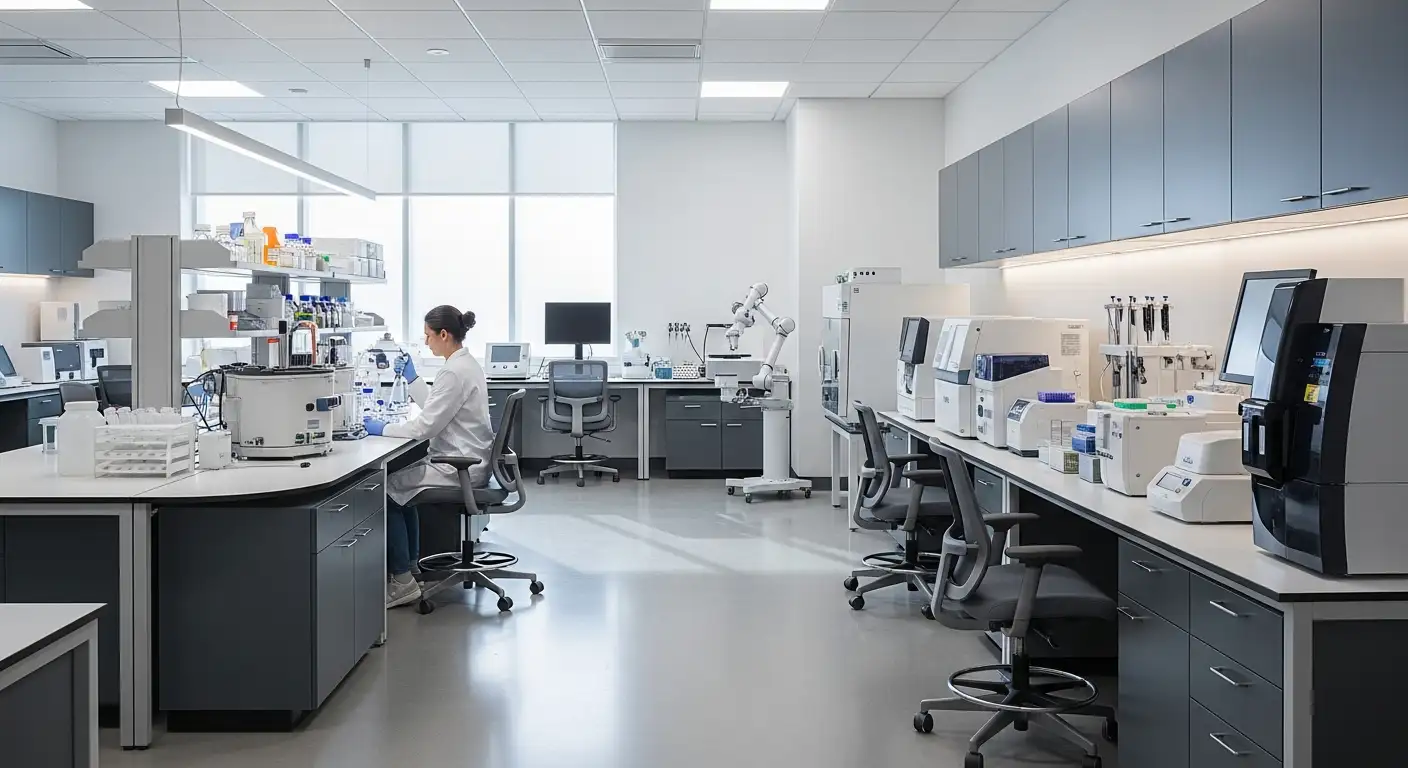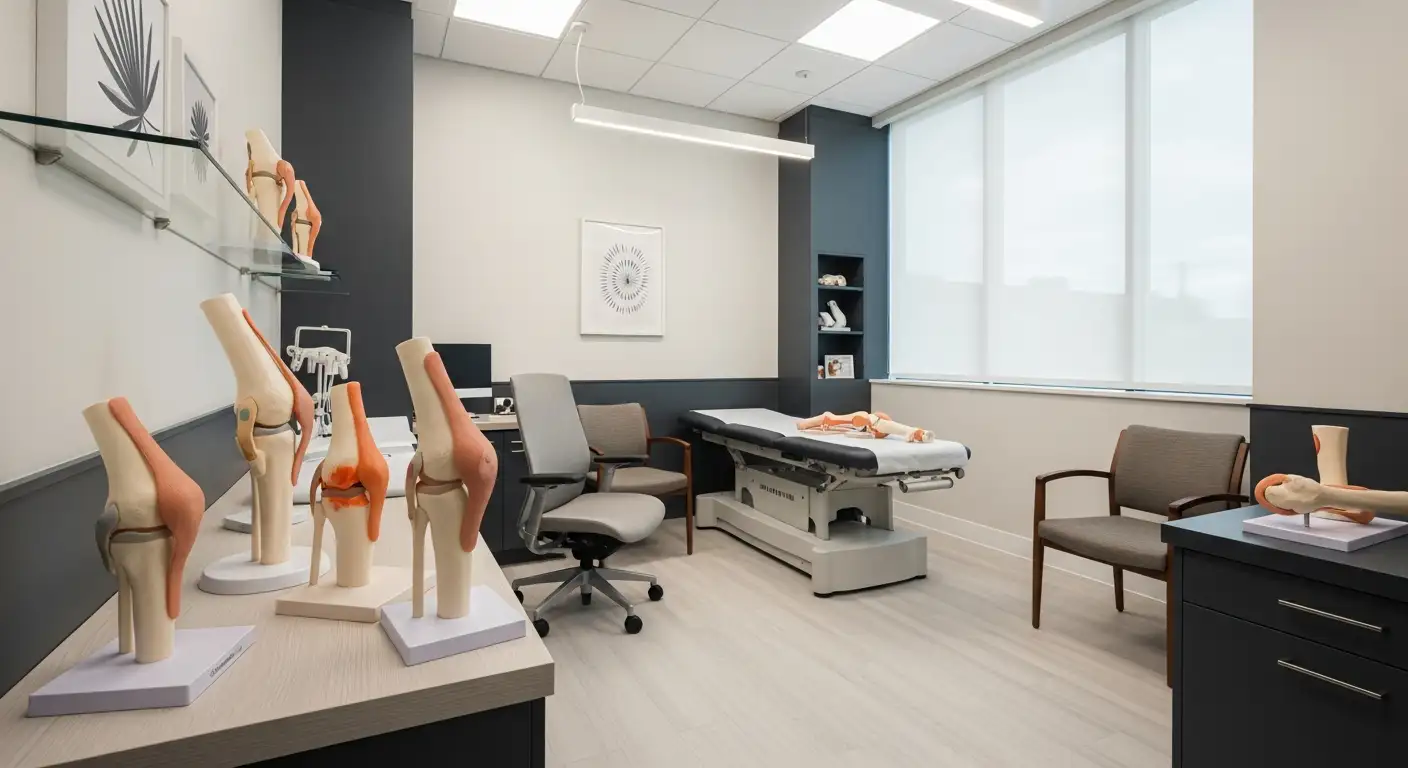Understanding the Scientific Foundations of Genicular Artery Embolization
Genicular Artery Embolization (GAE) has emerged as a minimally invasive, mechanism-based treatment targeting the vascular and inflammatory components of knee osteoarthritis. This article explores the scientific principles, biological mechanisms, recent advancements, and clinical evidence supporting GAE, providing a comprehensive overview of this innovative procedure.
Mechanisms of GAE in Alleviating Knee Osteoarthritis Symptoms

How does genicular artery embolization (GAE) work as a biological and physiological process?
Genicular artery embolization (GAE) functions by targeting the abnormal blood vessels that supply inflamed synovial tissue in the knee. In osteoarthritis, increased neovascularization driven by factors like vascular endothelial growth factor (VEGF) fosters persistent inflammation and pain. GAE involves superselectively catheterizing the genicular arteries and injecting embolic agents such as microspheres to occlude these hypervascularized branches. This blockade reduces blood flow to the inflamed synovium, which diminishes the delivery of inflammatory mediators and nerve growth factors. As a result, synovitis, inflammation, and pain transmitting nerve fibers are decreased. Essentially, GAE modulates the biological processes of neovascularization and inflammation, helping to alleviate symptoms and slow disease progression.
Why does genicular artery embolization work in relieving knee pain?
GAE relieves knee pain by locally reducing abnormal vascularity associated with osteoarthritis. The hypervascularization in the inflamed joint is fueled by pro-angiogenic mediators like VEGF. By occluding these enlarged and tortuous blood vessels, GAE decreases synovial blood supply, leading to a reduction in inflammation and associated nerve proliferation. This breaks the cycle of ongoing pain signals arising from inflamed, hypervascularized tissue. The decrease in inflammation, swelling, and nerve sensitization results in meaningful pain relief and improved joint function. In fewer words, GAE disrupts the pathological cycle of angiogenesis and inflammation that sustains osteoarthritis pain.
What are the biological effects and physiological responses induced by GAE?
Biologically, GAE results in a reduction of blood flow to hypervascular tissues in the knee, leading to decreased inflammation and neoangiogenesis. The occlusion of abnormal vessels curtails the supply of pro-inflammatory cytokines and neurotrophic factors that sustain joint pain. Nerve infiltration into inflamed tissues diminishes, promoting nerve desensitization. Physiologically, these changes manifest as decreased synovial hypertrophy, less joint swelling, and reduced pain perception. Many patients experience functional improvement as inflammation subsides. The overall responses include lower synovitis levels, less nerve fiber growth, and long-term pain reductions, generally with a low complication rate when performed precisely.
How long does it take for GAE to provide pain relief?
Patients typically notice initial signs of pain relief within days to a few weeks after the GAE procedure. The reduction in inflammation and neovascularization develops gradually, leading to more pronounced symptom improvement over several weeks. Most individuals report significant pain decrease within two to three months. Full effects, including stabilization of joint function and sustained relief, can last 6 to 12 months or more, depending on individual factors. The timeframe varies but generally aligns with the gradual biological healing response following vascular occlusion.
What is the scientific rationale behind using GAE for treating knee osteoarthritis?
The scientific basis for GAE in osteoarthritis hinges on its ability to target and inhibit pathological angiogenesis within the joint. Osteoarthritis involves low-grade inflammation driven by inflammatory cells and mediators, with neoangiogenesis providing pathways for new nerve fibers, sustaining pain and tissue degeneration. By embolizing the hypervascularized vessels, GAE reduces the influx of inflammatory and nociceptive mediators, directly addressing core elements of disease pathophysiology. The procedure aligns with recent insights into OA as an inflammatory and vascular process, thereby offering a mechanistic intervention that not only reduces pain but may also slow inflammatory progression.
What recent scientific advancements and research findings have been made related to GAE?
Recent research underscores GAE as a promising, safe, and effective minimally invasive treatment option. Systematic reviews and prospective studies involving over 270 patients report significant pain reduction lasting up to two years. Advanced imaging techniques, such as MRI, show decreased synovitis and bone marrow edema post-GAE, correlating with clinical improvements. Understanding OA as involving pathological neovascularization mediated by pro-angiogenic factors has strengthened the rationale for embolization. Newer embolic agents with better safety profiles and procedural modifications have enhanced accuracy. Ongoing clinical trials aim to establish long-term benefits, optimize patient selection, and potentially refine embolization techniques, emphasizing GAE's role in precision medicine for knee OA management.
Technological and Procedural Aspects of GAE

What procedural techniques and technological aspects are involved in GAE?
Genicular artery embolization (GAE) is a complex procedure that requires precise technical execution to ensure safety and effectiveness. It begins with the patient undergoing vascular access via a small incision, most often in the groin, where a catheter is inserted into the femoral artery.
Using real-time fluoroscopic imaging, contrast dye is injected to visualize the intricate network of genicular arteries supplying the knee joint. The interventional radiologist then advances a fine, flexible catheter into the targeted hypervascular branches of these arteries. Superselective catheterization allows for optimal placement of embolic agents into the vessels that predominantly contribute to inflammation and pain.
Embolic agents such as 100-micron microspheres—most commonly Embozene particles or Embospheres—are injected carefully. These tiny particles are designed to occlude abnormal blood vessels selectively, reducing synovial inflammation and neoangiogenesis without compromising the overall vascular supply.
Throughout the procedure, continuous monitoring ensures that embolization is confined to the intended vessels. This vigilance helps prevent non-target embolization, which could lead to tissue ischemia or skin necrosis. The technical challenge lies in navigating small arteries at sharp angles and recognizing collateral vessels that may supply the inflammatory tissues.
Successful execution hinges on detailed understanding of knee vascular anatomy, advanced imaging techniques, and skilled microcatheter manipulation. When performed meticulously, GAE significantly reduces risks and improves patient outcomes.
How do technological advancements improve the accuracy and outcomes of GAE?
Recent technological improvements have greatly enhanced both the precision and safety of GAE procedures. High-resolution fluoroscopy and digital subtraction angiography (DSA) provide clearer visualization of small, tortuous arteries, allowing interventional radiologists to target hypervascular areas more accurately.
Innovations in embolic materials have also contributed to better results. Monodisperse microspheres like Embozene are engineered for uniform size and predictable occlusion, enabling more controlled embolization. The development of temporary and permanent embolic agents offers flexibility based on clinical needs—temporary agents may allow reversible vessel occlusion, while permanent ones provide long-lasting symptom relief.
Furthermore, robotic-assisted navigation systems are beginning to be integrated into endovascular procedures. These systems enhance catheter stability and movement precision, reducing procedure time and increasing success rates.
Enhanced imaging techniques, such as 3D rotational angiography, provide detailed spatial orientation, which is particularly useful in dealing with arteries that have complex branching patterns. These technological strides decrease the likelihood of complications such as non-target embolization and improve long-term clinical outcomes.
In addition, ongoing advances in embolic agent design aim to optimize particle size and composition, balancing temporary versus permanent occlusion for personalized treatment. These innovations collectively elevate GAE as a safer, more effective minimally invasive option for managing knee osteoarthritis pain.
Post-Procedure Care and Long-Term Efficacy of GAE

What is the typical post-procedure care for GAE patients?
Following genicular artery embolization (GAE), patients usually undergo a brief period of monitoring to ensure there are no immediate adverse effects such as bleeding, allergic reactions, or significant discomfort. Most are discharged on the same day, often within a few hours to half a day after the procedure.
Patients are advised to rest for at least 24 to 48 hours post-procedure and avoid vigorous activities to allow healing. It is common to experience mild side effects like skin discoloration at the puncture site, soreness, or slight swelling, all of which tend to resolve spontaneously.
Regular follow-up is scheduled at intervals of 1, 3, 6, and 12 months. These visits include clinical assessments through symptom questionnaires and imaging studies such as MRI or Doppler ultrasound to evaluate changes in synovial hypervascularization and inflammation. Patients are encouraged to report any persistent or worsening symptoms early.
This careful follow-up helps to monitor the effectiveness of GAE, manage any minor issues promptly, and determine if further interventions are necessary.
How lasting are the benefits of GAE, and can the procedure be repeated?
Studies consistently demonstrate that the pain relief and functional improvements from GAE can last from six months up to two years or even longer in some cases. Many patients report significant reductions in pain scores, such as the visual analog scale (VAS), and improved joint function, often reflected in scores like WOMAC and KOOS.
The durability of GAE benefits depends on factors like the severity of osteoarthritis and individual response to treatment. Some patients, especially those with moderate osteoarthritis, enjoy sustained relief that enhances mobility and quality of life.
While the benefits are often durable, osteoarthritis can continue to progress, leading to revascularization or increased inflammation. This may cause symptoms to re-emerge.
Encouragingly, GAE can be safely repeated if symptoms recur or worsen. To date, no patient has undergone more than two treatments, and repeated procedures have shown comparable safety and efficacy profiles.
Repeat GAE sessions involve similar steps, using embolic agents such as microspheres or temporary agents, and can effectively refresh symptom relief.
What are the main adverse events associated with GAE, and how are they managed?
Adverse events linked to GAE are predominantly minor and transient. The most common issues include skin erythema, small hematomas at the access site, and mild discomfort. These typically resolve within a few days without intervention.
Rare complications include skin ischemia or ulceration, which can occur if non-target embolization affects surrounding tissues. Such events are usually reversible with conservative treatments, such as wound care or topical medications.
Risk factors for adverse events include the size of embolic particles and technical challenges during catheter navigation. Meticulous procedural planning, real-time imaging, and operator expertise significantly lower these risks.
Post-procedure, patients are monitored closely for signs of complications and are advised to avoid activities that might compromise recovery. Emergency care or specialist consultation is available should any unexpected issues arise.
Overall, with careful technique and follow-up, GAE maintains a favorable safety profile, making it a promising option for managing chronic knee pain.
Future Directions and Broader Implications of GAE
As research advances, genicular artery embolization continues to hold promise as a mechanism-targeted, minimally invasive treatment for knee osteoarthritis. Ongoing studies aim to refine embolic techniques, understand long-term effects, and expand indications. With technological innovations and a growing body of robust clinical evidence, GAE has the potential to become a standard option for patients seeking effective pain relief without surgery, aligning with the principles of precision medicine. Future research will likely focus on optimizing patient selection, developing novel embolic materials, and combining GAE with other therapies to further improve outcomes.
References
- Genicular Artery Embolization (GAE) - Interventional Radiology
- Genicular Artery Embolization Technique - ScienceDirect.com
- Genicular Artery Embolization for Knee Arthritis - UChicago Medicine
- The Science Behind Genicular Artery Embolization - Pearl Medical
- Genicular Artery Embolization: A New Tool for the Management of ...
- Geniculate Artery Embolization: Role in Knee Hemarthrosis and ...
- Genicular Artery Embolization Technique: A Comprehensive Insight
- Genicular artery embolization for knee pain | Ohio State Health ...





